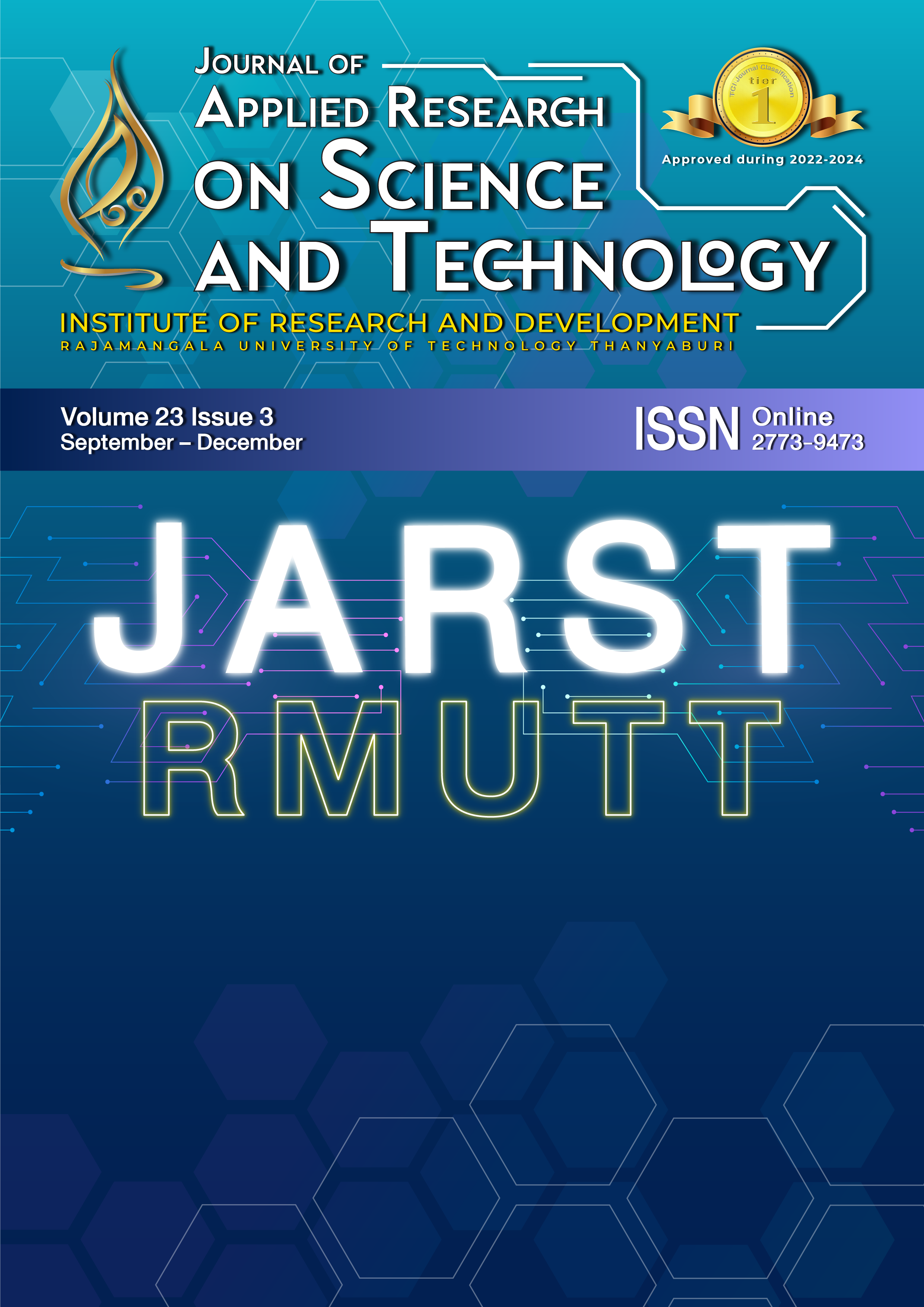Enhancing torrefaction process efficiency for biochar production from filter cake residue in the sugar industry
Main Article Content
Abstract
The torrefaction process is a promising technique for enhancing the quality of solid biomass fuels. This study investigates the effects of torrefaction on biochar produced from filter cake residue, a byproduct of the sugar industry. The primary objectives were to evaluate the impact of process parameters on biochar properties and identify optimal conditions for maximizing the higher heating value (HHV). Filter cake residue was subjected to torrefaction at temperatures ranging from 220-340°C under an inert atmosphere. The influence of particle size (20, 60, and 100 mesh), nitrogen flow rate (20-30 ml/min), temperature (220-340°C), and residence time (30-90 min) on biochar properties was examined using response surface methodology. Proximate analysis revealed that torrefaction significantly reduced moisture, volatile matter, and ash content while increasing fixed carbon content. The maximum HHV of 21.9571 MJ/kg was achieved at a particle size of 20 mesh, nitrogen flow rate of 25 ml/min, temperature of 340°C, and residence time of 60 min. The experimental results agreed with predicted values from the developed models, with an average error of 3.64%. Optimal torrefaction conditions were determined to be a particle size of 21.77 mesh, nitrogen flow rate of 22.50 ml/min, temperature of 311.13°C, and residence time of 42.58 min, yielding a maximum HHV of 18.4853 MJ/kg. These findings demonstrate the potential of torrefaction for upgrading filter cake residue into a high-quality solid biofuel, providing a sustainable solution for waste utilization in the sugar industry.
Article Details

This work is licensed under a Creative Commons Attribution-NonCommercial-NoDerivatives 4.0 International License.
References
Indam P, Mueanmat C, Rattanawilai S. Selection of factors affecting the torification process of palm bunches using an experimental design. KKU Research Journal (Graduate Studies). 2019;19(4):86-99.
Business/industry trends 2020-2022: Electricity generation business [Internet]. 2021 [cited 2021 June 21]. Available from: https://www.krungsri.com/th/research/industy/industryoutlook/Energy-Utilities/Power-Generation/IO/io-power-generation-20.
Biochar production and guidelines for its use [Internet]. Chiang Mai: Maejo University; [cited 2021 Oct 11] Available from: https://erp.mju.ac.th/acticleDetail.aspx?qid=1072.
Acharya B, Sule I, Dutta A. A review on advances of torrefaction technologies for biomass processing. Biomass Conversion and Biorefinery. 2012;2(4):349-69.
Asadullah M, Adi AM, Suhada N, Malek NH, Saringat MI, Azdarpour A. Optimization of palm kernel shell torrefaction to produce energy densified bio-coal. Energ Convers Manage. 2014;88:1086-93.
Li MF, Li X, Bian J, Chen CZ, Yu YT, Sun RC. Effect of temperature and holding time on bamboo torrefaction. Biomass and Bioenergy. 2015;83:366-72.
Granados DA, Ruiz RA, Vega LY, Chejne F. Study of reactivity reduction in sugarcane bagasse as consequence of a torrefaction process. Energy. 2017;139:818-27.


